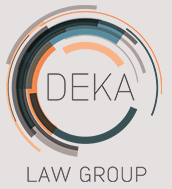Author – Aubrey E. Lerner
.jpg)
If you have a disabled beneficiary in your life, you should consider these planning options:
1) Special Needs Trust
Any person with a disability can benefit from a special needs trust (also called a supplemental needs trust). A special needs trust is a trust established for a person with a disability. The purpose of the trust is to supplement, not supplant (i.e. take away from) public benefits received by the beneficiary. These public benefits can include SSI (Supplemental Security Income) and Medicaid benefits (i.e. Medi-Cal).
SSI is a Federal income supplement program funded by general tax revenues. SSI is designed to help aged, blind, and disabled individuals who have little or no income. It also provides cash to meet basic needs for food, clothing, and shelter.
Medicaid provides health coverage to millions of Americans, including eligible low-income adults, children, pregnant women, elderly adults and individuals with disabilities. Medicaid is administered by states according to federal requirements. The program is funded jointly by states and the federal government.
Medi-Cal offers free or low-cost health coverage for California residents who meet eligibility requirements. Medi-Cal uses federal poverty level (FPL) limits of the current year to determine eligibility for its programs.
There is no limit to the number of special needs trusts from which a person may benefit.
There are two types of special needs trusts: a first-party and a third-party. Which one is right for your beneficiary?
Establishing the trust: A first party special needs trust can only be established before the disabled person attains age 65 and must be established by the disabled beneficiary.
A third-party special needs trust can be established by anyone, except for the person with the disability. If the assets used to fund the special needs trust belong to the beneficiary, then the special needs trust will have to be a first party trust. Common scenarios that lead to the establishment of a first-party trust include settlement proceeds from a court case or inheritance.
Paying expenses from a special needs trust: Special needs trust funds can be used for anything except food or housing. It’s counterintuitive! That’s why you may need to consider establishing an ABLE Account, discussed in number 2 below.
Death of a beneficiary: what happens to the special needs trust funds at the beneficiary’s death? If it is a first-party special needs trust, then there is a Medicaid payback requirement. If it is a third-party special needs trust, then the Settlor (or person who creates and establishes the trust) can decide within the trust document. It can be heirs, friends, family members, or anyone the Settlor decides.
2) ABLE Account
Establishing the account: Not everyone can benefit from an ABLE account. Only persons who were disabled before the age of 26 are eligible. Anyone, including a person with a disability, can establish an ABLE account. However, a disabled person may only be the beneficiary of one ABLE account.
Death of a beneficiary: at the beneficiary’s death, the funds in an ABLE account can go to a beneficiary designated on the account or to the beneficiary’s heirs. California is one state that did not implement a Medicaid payback for ABLE accounts.
Limits to funding an ABLE account: Another consideration are the limits to funding an ABLE account. One thing to look out for is that you can only donate $15,000 (or the annual gift exemption) each year to an ABLE account. Additionally, an ABLE account cannot exceed a total of $100,000 during the beneficiary’s lifetime, or SSI benefits can be suspended.
What should you use to fund an ABLE account? ABLE accounts can be funded with SSI benefits, cash, and or existing 529 educational accounts (subject to the annual $15,000 gift limit).
Expenses: You can use ABLE account funds for “qualified disability expenses,” which include food, housing, and education.
3) Conservatorships
A conservatorship is a court-monitored process that can be necessary
when there is an adult who cannot care for himself or herself or manage his or her own finances. A conservatorship of the person covers personal and health care and conservatorship of the estate covers finances and assets.
Establishing the Conservatorship: a spouse, domestic partner, adult child, parent, sibling, etc., can petition the court to become the conservator of the adult who needs assistance. Often, this disabled adult did not have a Financial Power of Attorney or a Health Care Directive; or lacked capacity to execute such documents.
Disabled adults can only have one conservatorship established for them, and it will be in the state/county in which they reside.
You might need a conservatorship of the estate if the person is over age 65 (as they can no longer fund a first-party special needs trust), and there is no one available in their life to establish a third-party special needs trust for their benefit, and or if the person did not become disabled before age 26 (which would disqualify them from having an ABLE Account).
Funding a Conservatorship Account: What can you use? It depends. It can include SSI benefits, bank accounts, cash, and stock, depending on what assets the person owns or receives.
Expenses: Payments from a conservatorship account are subject to court approval. The conservatee (i.e. the disabled person or the person needing assistance) may be able to have an allowance for everyday expenses. Otherwise, the conservator (person appointed to assist the conservatee) must show the court how funds are spent.
Death of a Beneficiary: at the death of a conservatee, the conservatee’s estate becomes a “decedent’s estate” and passes through probate, the court monitored administration of a deceased person’s estate. If they have no will, the assets will go to their heirs by operation of law.
Can you have all three?
Special Needs Trust, ABLE Account, Conservatorship
The answer is yes. You probably won’t need all three, but you could potentially have all three if the person is younger than 26 but over age 18. It depends on the amount of assets available to that person and whether or not someone has been appointed as a health care agent or durable power of attorney agent.
4) SECURE ACT Stretch Out for IRAs
If you read Kristen Terranova’s blog on the SECURE Act, then you know the SECURE Act ended the IRA lifetime stretch option for most people and instead, required the inherited assets to be entirely withdrawn from the IRA within 10 years of the original owner’s death. However, limited exceptions exist for certain groups. One of these groups includes disabled individuals.
A special provision in the SECURE Act now allows a person to leave retirement benefits to a supplemental needs trust for a disabled individual. If they do so, the supplemental needs trust will qualify for the lifetime expectancy payout and still be able to function as a supplemental needs trust. The key, however, is that the trust cannot pay anything to anyone other than the individual entitled to use the life expectancy payout.
Before the SECURE Act, a supplemental needs trust funded with retirement plan death benefits could include a “relief valve” provision. This provision allowed the Trustee to distribute excess income to members of the beneficiary’s family. This allowed them to shift the income tax burden to those with a lower tax bracket then the trust.
Now, the Trustee can no longer do so. If you have a disabled beneficiary, you should take these new SECURE Act provisions into consideration when designating your beneficiary on retirement accounts. Contact Deka today to see what is best for you and your family.
Here are some additional resources you may find helpful:
https://www.ablenrc.org/wp-content/uploads/2019/07/Top-10-Questions-Feb_Final.pdf
https://www.treasurer.ca.gov/able/resources/factsheets/factsheet-en-us.pdf



